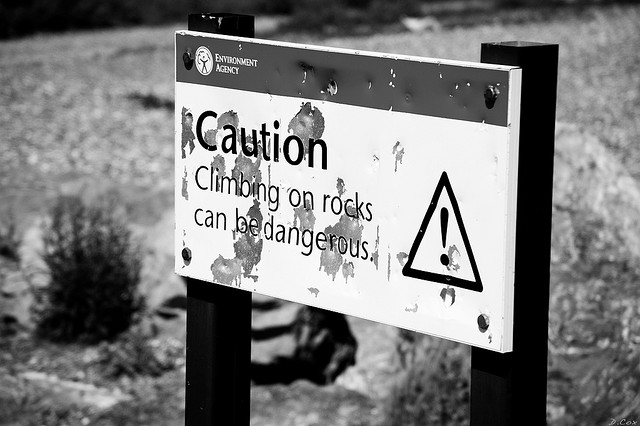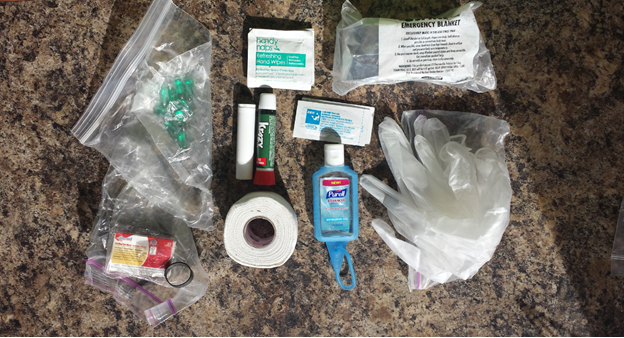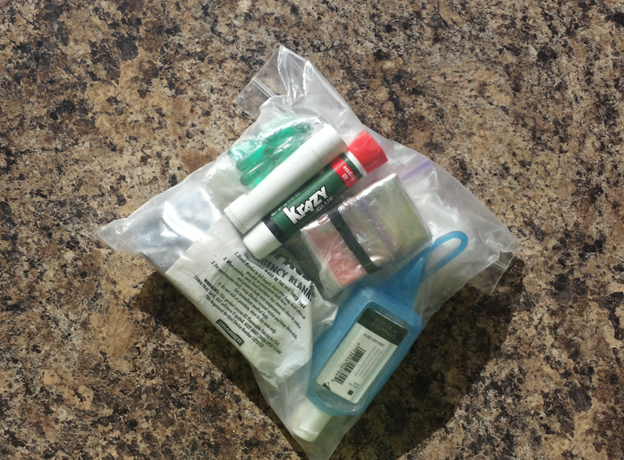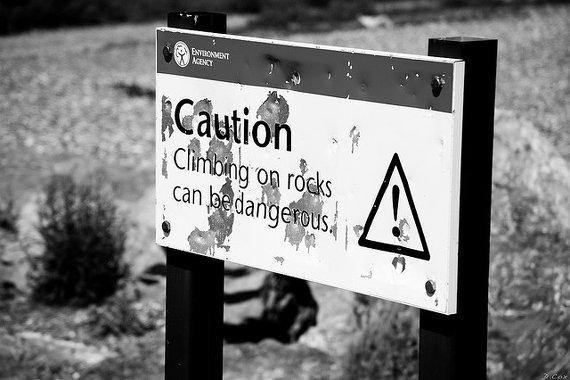Use this as a guide to understanding the value of first aid in your climbing, but be sure to seek professional instruction to supplement these tips.

Photo: Damien Cox
Climbing is inherently dangerous.
We’ve all seen or heard those infamous words somewhere. And yet we all seem to subconsciously race passed this disclaimer, choosing to forgo the voice of reason in pursuit of something more. The prevailing thought here is one of overall optimism:
Nothing bad will actually happen while we’re out climbing. After all, climbers have a pretty solid track record for keeping their endeavors safe and fun. We take the necessary precautions. We check our partners for safety. We plan in advance. The people who get hurt climbing must have made a mistake that we won’t, right?
First aid training is indispensable for the crag, backcountry, and in the alpine.
In high school I worked summers as a lifeguard. A large part of my training included First Aid, CPR, and AED. I’ve since moved on from summers spent lounging pool side, but I’ve made sure to renew my certifications annually. Why go through all the trouble you might ask? Because I regularly put the skills I learned in these classes to use at the crag, in the backcountry, and in the alpine.
While there are many crags that offer five star routes close to home, climbers are hard pressed to deny the pull of the distant horizon. Many of us choose to seek out isolated crags and routes and put ourselves in environments where having the skills to deal with an emergency could make or break the trip—or even worse, make the difference between life and death. Places like Yosemite and Joshua Tree—two of California’s largest climbing areas, offer easily accessed climbing spots as well as areas for those of us seeking something more removed. If you find yourself visiting areas where you’ll be hiking into a crag, staying overnight in the backcountry, or venturing into the alpine, having basic first aid skills is essential.
Related: 4 Steps for How to Transition to Alpinism
Where can I get training?
- The American Red Cross packs the most bang for your buck, offering a cost-effective training course for Cardiopulmonary Resuscitation (CPR), Automated External Defibrillators (AED), and First Aid. Some consider the skills you’ll learn here the bare minimum to get a handle on everyday emergencies. See here for more information.
- Those looking to receive more comprehensive first aid training might be interested in taking a Wilderness First Responder (WFR) course through NOLS. WFR certification is expensive, but scholarships may be available. Depending on your commitment level and other goals, WFR might not be the right fit for everybody. See here for more information.
- Another option for those seeking in depth first aid training is to pursue an Emergency Medical Technician (EMT) certification. EMT certification is a rigorous and demanding course. It is also expensive, however certification offers an entryway into many different jobs and vocations. Climbers who are interested in working for Emergency Medical Services or Search and Rescue might be most interested in this option. See here for more information.
Although these classes carry a fee, the skills you learn are incredibly valuable in your day to day life, and doubly so when applied to your climbing endeavors. Furthermore, having the skills to deal appropriately with emergencies inspires a sense of confidence and affords peace of mind so you can focus on what really matters: bagging that peak, climbing a striking line far away from anything or anyone, crushing your super sweet project, or even just hiking in and out on a longer approach or descent.
Related: Climbing Ethics: Vital Decison-Making Scenarios
What should I carry in a first aid kit?
I consider my first aid kit to be as much a part of my rack as I do my cams. Sometimes I think of it more as a “tool kit” than anything else. If I’m out climbing, you can bet I have it with me. And while weight and space are both primary concerns for climbers, being prepared doesn’t have to mean lugging around the kitchen sink. I put together a small emergency kit with two guidelines in mind.
Light is right (fast)
Many of you have probably heard this in relation to alpine climbing. Ideally, we would bring everything we need with us on an adventure, but unfortunately that just isn’t the case. That’s why I make my kit as light as possible. Compromise is the name of the game here. Rather than ask myself if I need an item, I if I can do without it. On fast and light days, my kit is comprised of little more than tape, super glue, and some ibuprofen.
Maximize versatility
Before adding something into my kit, I also ask whether or not the item can perform more than one duty. For instance, a roll of climbing tape offers multiple bandaging options in addition to being useful for repairs on the fly. Non-alcoholic wipes are useful for a variety of clean-up scenarios. You get the picture: everything in my kit is useful for more than one job.


Basic first aid guidelines
1. Assess the situation
Before approaching an injured person, take a moment to do a quick assessment of the situation. Look for hazards to yourself or other people. This includes blood. Be sure to have gloves and other personal protective equipment (PPE). If the situation is unsafe, do not approach. Go for help instead.
2. Call for help
After assessing the situation, either call for help or send someone to get help. If the situation can be resolved without aid, begin caring for the injured person.
3. Care for the injured person
Never provide or administer care if you are not comfortable doing so. This could mean simply helping to make someone comfortable talking to them while waiting for help to arrive. Maybe it means taking turns backpacking your friend to the trailhead. It all depends on your level of training and comfort.
4. Always defer to people with more medical training than yourself
Be helpful. Pass on any and all pertinent information. Assist when you can. Stay out of the way when you can’t.
Related: 10 Common Mistakes New Big Wall Climbers Make
On being prepared
I love climbing. To me there’s nothing that compares, and there’s nothing I would rather be doing. But the reality is that our pursuit is in fact dangerous and every now and then the universe seems to conspire against us to throw another challenge our way. It’s in those times where being prepared and having the skills necessary to prevent the end of the world really come in handy. Well maybe not the end of the world, but it sometimes seems that way. And that is exactly when I hear that phrase, the one about all that so-called “danger,” ringing in my ears. It reminds me that things do happen, and even though I hope they never will, I still need to be ready.
Free eBook: 7 Mistakes to Avoid as a New Climber
Paul Mandell has been traveling and climbing throughout the U.S. for the last three years. He spends his summers living, playing, and working in Yosemite Valley. When not otherwise engaged, he spends his time working towards a degree in Kinesiology. Paul is always looking for the next adventure and trying to pay attention to the lessons life imparts along the way.








